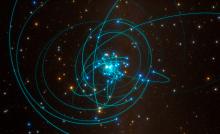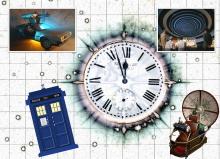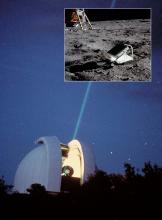Listen to today's episode of StarDate on the web the same day it airs in high-quality streaming audio without any extra ads or announcements. Choose a $8 one-month pass, or listen every day for a year for just $30.
You are here
Time Dilation
No two clocks in the universe appear to tick at exactly the same rate. That’s because no two clocks move at exactly the same speed, or feel exactly the same gravitational pull. Even two clocks on the same wall tick at slightly different rates. For those clocks, the difference is tiny — it would take longer than the age of the universe to add up to a single second. In other cases, though, the difference can be dramatic.
The effect is known as time dilation. The explanation for it comes from Albert Einstein’s theories of Relativity. And as those theories tell us, it all depends on who’s looking at the clock.
Special relativity says that clocks appear to move at different rates for objects moving at different speeds. Seen from Earth, the clock of a spacecraft moving at almost the speed of light would appear to tick slower than a clock on Earth. From the starship, though, its clock would move at the normal rate, while the clock on Earth would appear to move slower. Both clocks are correct. But viewed from different perspectives, they appear to tick at different rates.
General relativity says the same thing applies for objects in different gravitational fields. The stronger the gravity, the slower the clock appears to tick as seen from outside the stronger field.
Both effects have been confirmed by experiments. They make for some interesting science fiction. But they also apply to daily life. More about that tomorrow.
Script by Damond Benningfield





